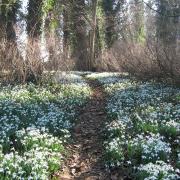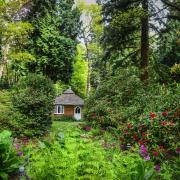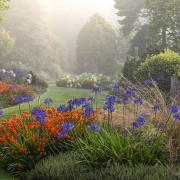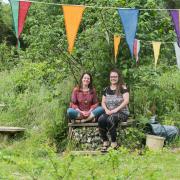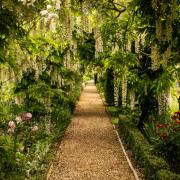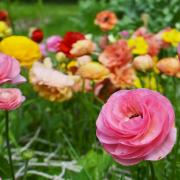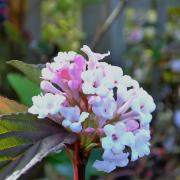Expert plantsman Keith Clouting of Taverham Nurseries with his April garden tips
If you need a splash of colour in a problem area then a berberis may be the plant you need. They are hardy, easy to grow, wildlife-friendly and their yellow and orange flowers are attractive bees and other pollinators.
The flowers are followed by berries, which are enjoyed by birds and other wildlife, or even by us in jams and preserves. One species with edible berries is Berberis darwinii which originates from southern South America.
It makes a dense, medium-sized evergreen shrub with small shiny dark green prickly leaves and in April and May is covered with masses of fragrant orange flowers which are followed by the edible blue berries. As well as an excellent border or specimen plant, it also makes a good, impenetrable hedge.
Another outstanding evergreen berberis is B.gagnepainii var. lanceifolia ‘Fernspray’. This delightful, but spiky, shrub has elegant, slender leaves which are deep green for much of the year but in cooler weather of late autumn and winter turn wonderful shades of maroon and purple.
In spring it bears yellow flowers which are self-fertile producing blue berries in autumn. A small, deciduous variety with spectacular spring foliage is berberis thunbergii ‘Diabolic’ (syn. B.t Diabolicum). It has bright yellow leaves with red edges which are particularly striking in spring; it also has pale yellow flowers which are followed by shiny red berries in autumn when the foliage turns a showy orange-red before falling. Berberis grow well in most soil types in sun or partial shade and also cope well with windy sites.

Plant of the month
Psuedopanax ferox
This wonderful architectural oddity from New Zealand goes through an extraordinary metamorphosis as it ages, when young it has a slender pole like trunk with long narrow, toothed downward pointing leaves evolved to protect the young tree from grazing animals, as the tree reaches maturity after 10 to 15 years the leaves become shorter and broader and it starts to form a branching lollipop head. In spring mature trees produce umbels of star-shaped greenish flowers followed on female plants by green berries which turn black in as they mature. Due to their initial upright growth they are suitable for sheltered sites in even small gardens, a must have for lovers of the unusual.
Ask Keith

I would like to grow some ferns in a shady area which is quite dry; are there any which will cope with these conditions?
Yes, there are several good ferns which will grow well in dry shade; one of my favourites is Asplenium scolopendrium which has solid, broad tongue-like leaves which gives a good leaf contrast to most other ferns. A good larger species growing to over 1m is Dryopteris filix-mas which tolerates dry shade very well as does Dryopteris eythrosora and its varieties which all have reddish copper hues to their young foliage. For smaller carpeting ferns at the front of the border try polypodium varieties which are really tough and are even happy growing on the tops of walls.
April jobs
Put woody twigs or supports in place around tall growing plants now, allowing them to grow through gives a much more natural look than tying them up when they have grown.
Hoe on a dry day to keep on top of any weed seedlings, a few minutes doing this regularly now can save time and harder work later on.
If you cover your wall-trained fruit ensure the sides are open to allow access for pollinating insects.
With the days warming, ventilate greenhouses whenever possible; also some light shading may be necessary to prevent young seedlings from scorching.
Remove raspberry suckers emerging away from the row and thin new canes to around 15cm apart on the support wires.






